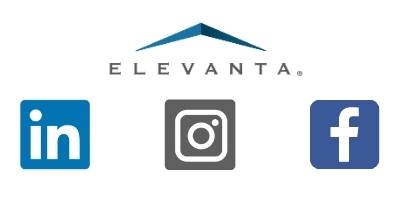The COVID-19 pandemic has brought many challenges to the workforce in 2020. As government restrictions forced closures of businesses across the nation, managers had to make tough choices regarding their employees.
Although the unemployment rate has been steadily declining, businesses are still facing the challenges of the initial spike in unemployment that occurred in the spring. Now in late October, many businesses are open again and looking to bring team members back, only to face struggles with the process.
Many factors contribute to the difficulty of getting team members to return to work. Fear of COVID-19 and competitive unemployment benefits are just a few keeping workers at home.
Read on for a collection of tips and best practices to keep your employees during this virus.
Show Compassion and Invest in Your Team
It is always important to show compassion to your team members. But in a time of crisis, it is vital to be understanding of everyone’s situation. Stay connected with your team members and make sure they are taken care of.
A great way to achieve this is to have weekly one-on-one check-in meetings with employees. This gives them a chance to talk to supervisors and let them express any concerns. These meetings can be held in person or via phone call or Zoom. Staying in touch with your employees and communicating effectively with them will let them know they are a top priority to the company.
It is important to remember that each interaction an employer has with its employees serves as a touchpoint. All these touchpoints should be positive because they will make or break the employee experience.
Offer Incentives
Another way to get employees to stick with your company during this time is to provide them with incentives to stay. Whether it’s increased pay, benefits or bonuses, employees respond well to motivation.
“It is the responsibility of every business to care for its employees during this time of uncertainty, shared sacrifice and common cause,” Starbucks CEO Kevin Johnson said in a company letter written in March. Johnson and his team implemented several incentives for Starbucks’ employees this year, including catastrophe pay, free meals and educational programs.
Although it isn’t always possible for companies to shower their team members with bonuses and raises, Johnson’s point holds true and can be implemented on a smaller scale.
Even something as simple as letting employees attend training sessions to foster growth and development or giving out gift cards to deserving employees could be good tactics for motivating your team.
Many potential employees seek out businesses offering health care coverage, particularly during times when illness is a top concern, such as during a pandemic. Elevanta Health offers 14 plan designs to choose from, all covered by a Blue Cross Blue Shield provider network that includes over 98% of providers. With access to telehealth rising in popularity with employees, many will look for coverage, like Elevanta’s, that allows them virtual health care visits.
As the economy struggles, providing quicker and easier access to employees’ wages will be a desired perk for many. Options such as rapid! PayCard’s solution operates like a debit card program, eliminating the hassle and expense of handing out paper paychecks while offering employees faster access to their money.
The Society for Human Resources Management (SHRM) estimates that, on average, it costs businesses six to nine months of salary to replace a salaried employee and about $1,500 to replace each hourly worker. Taking this into consideration, it might be worth it for companies to invest in incentives for employees instead of facing turnover costs.
Retention: The Game is Won in the Trenches
Once a company has invested time and money into a new employee, there are several strategies that can be implemented to retain them. Football fans might have heard the phrase, “the game is won in the trenches.” On the football field, the trenches refer to the offensive and defensive lines. In the business world, the trenches are your company. Executives and managers must be prepared to block and tackle issues head on to retain their employees.
A 2019 report released by Work Institute estimated that employers can prevent nearly 77% of turnover. This suggests that implementing retention strategies is vital to an organization to save them time and money.
The trenches of your business should be an environment where team members can thrive. This involves both the physical state of your business and the established culture team members walk into – or in today’s world, log into – every day.
The condition of equipment can play a role as well, such as computers and software. If any or all of these are damaged or defective, it could make an impact on performance. If team members do not feel like they can perform to their best ability, it could negatively impact retention rates.
If your business is operating again in person, cleanliness and organization also play a role. Make sure that break rooms and common areas are spaces where employees can feel comfortable and motivated to work.
Perhaps the primary way to create a positive work by environment is by establishing a permanent company culture. Employee recognition and clear communication are both significant factors, during COVID-19 and beyond. Giving praise and recognizing leaders who are performing well gives them encouragement and serves as a reminder of their value to your business and that they can work their way up the ladder.


